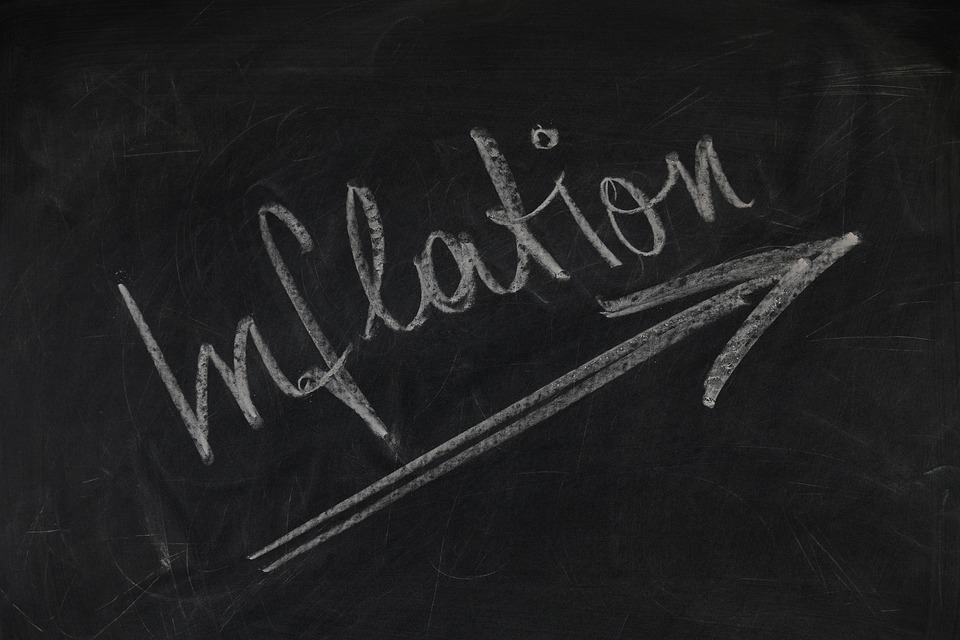Why Is The Fed Still Tilting At Fading Inflation?

With inflation fading, the US Federal Reserve continues to the fight against a familiar foe: inflation. The question now is, why? Why does the Federal Reserve continue to tilt against the fading enemy known as inflation?
The obvious answer is that the Fed knows how much money it created out of nothing that they pumped into the economy. That was when a locked down society, following the lead of the monetarily inflating Fed and the fiscally stimulating government, simply tapped the heels of its ruby slippers and wished for an economic resurgence to come true.
The Fed continues to tilt at its windmill despite the change in “sticky” prices tanking from a year ago. These are the more persistent inflationary effects. While they have begun rolling over from extreme levels when viewed literally, the change from a year ago is striking. As you can see, such a weakness in these prices usually coincides with a recession (shaded) either sooner or not much later.
(Click on image to enlarge)
St. Louis Fed
Food prices are not an issue globally, although you might find your local grocer and/or its supply chain gouging as long as they can, given the major media hype that inflation still enjoys.
(Click on image to enlarge)
World Food Price Index (TradingEconomics.com)
The inflation rate has bumped up within its declining trend from Q4, 2022, which we anticipated back then as one of the reasons for an incoming stock market rally (the other reasons being extremely over-bearish market sentiment at the time along with the mid-term election cycle, which is positive, on average).
(Click on image to enlarge)
Inflation Rate (TradingEconomics.com)
The reason for the July bump up? Well, crude oil, which drives the CRB Commodity index, rose strongly in July. Now, is this inflation, or is it the result of price rigging by a desperate OPEC+? I'd answer with the latter, myself.
(Click on image to enlarge)
TradingEconomics.com
So, what is driving the Fed’s policy? Could it actually be chasing outlier issues? Unlikely.
Is it the very stock market bubble that the Fed itself created and sustained for the past many years? Well, insofar as it has made Americans feel relatively wealthy (or kept many from feeling destitute), just maybe the Fed would like to see an extreme moderation in this inflated mess.
The stock market has been a major beneficiary of previous inflationary policy. You could say that the Fed literally printed bull markets in 2002, 2008, and 2020 through various means of MMT (Modern Monetary Theory).
(Click on image to enlarge)
Is it the bond market rebellion? Possibly. It could be the point of saturation whereby the license to inflate in the future has been withdrawn or severely limited by the bond market.
(Click on image to enlarge)
Maybe that is what the Fed is primarily reacting to. It could be trying to restore its good name as a financial steward. But of course, if you’ve been paying attention, you know that the Fed’s name has not been good for some time.
It’s name is Nosferatu, and it has simply been sucking the blood out of the financial system and economy by taking the license granted by the bond market’s disinflationary signaling and printing asset bull markets as needed by increasing the supply of money relative to said assets.
Meanwhile, the 2-year Treasury yield keeps dragging the Fed hawkish on the short end of the bond market, even though the divergence currently in play will likely lead directly to a bear market, as has been the historical norm.
(Click on image to enlarge)
Sure, the US government has been debt spending on roads, bridges, and all manner of other interests in order to grease the pump for the next presidential election. That is fiscal policy, and when it is promoted by creating new debt, it is not altogether different than the Fed’s monetary policy-fueled inflation cycles. Is the Fed fighting the government’s actions in this case? To a degree, I suppose.
But the bottom line is that the financial markets have handcuffed the Fed to the degree that for whatever the reason, it was forced into its hawk suit. And until something breaks, it may not be released from that suit.
Meanwhile, with a constrained inflationary benefactor, what do you suppose the bombed-out gold/SPX ratio will do when the bear arrives? Gold is near all-time highs and thus vulnerable, you say? Well, perhaps to a degree, within the volatile post-2020 handle consolidation. But that green ratio is going to bottom and turn up, which the 10-year/2-year yield curve is already posturing to do. A steepening yield curve usually goes with the “bust” side of the boom/bust cycle.
There will be plenty of reason to value gold in this coming environment, where markets could be set relatively free of the type of destructive, inflationary, and bubble-making environment we’ve experienced for over two decades now. Gold is the anti-bubble, after all.
(Click on image to enlarge)
More By This Author:
Gold: The Anti-BubbleGold Stock Correction Finally Hits Target #1
US Dollar Index Hanging Tough
Subscribe to NFTRH Premium for your 40-55 page weekly report, interim updates and NFTRH+ chart and ...
more










